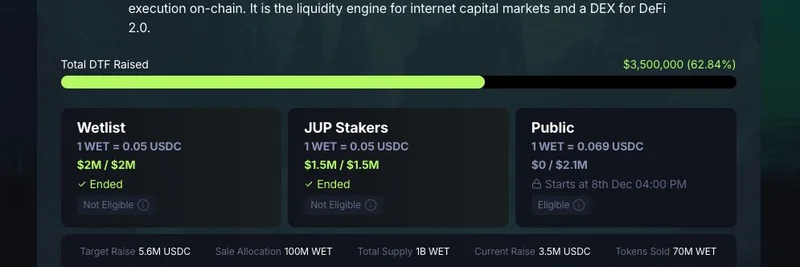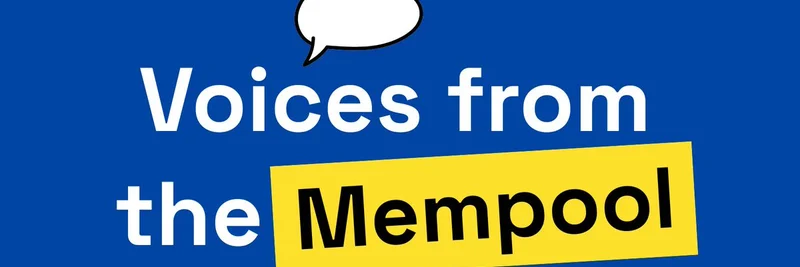In the fast-paced world of crypto, staying ahead means understanding the tech that connects it all. Recently, BSCNews shared a compelling deep dive on Quant Network via this tweet, spotlighting its focus on interoperability. As someone who's navigated the blockchain space from CoinDesk to now curating meme token insights at Meme Insider, I see huge potential here—not just for enterprise-grade projects, but for the wild world of meme tokens too. Let's break it down simply and see why $QNT might be worth your attention.
What Is Quant Network?
Quant Network isn't your typical blockchain; it's more like the glue that holds different blockchains together. Founded in 2015 by Gilbert Verdian, a cybersecurity veteran with stints at Mastercard and government roles, Quant aims to solve one of crypto's biggest headaches: silos. Different networks like Ethereum, Bitcoin, and Binance Smart Chain don't naturally talk to each other, which limits innovation—especially for meme tokens that pop up on various chains.
At its core is Overledger, described as the "operating system for blockchains." It's not a chain itself but an API gateway that lets developers build multi-chain apps (mDApps) without headaches. Imagine creating a meme token that seamlessly interacts across Solana for speed and Ethereum for liquidity—Overledger makes that possible by enabling secure data and asset swaps between public and private ledgers. No need to rip out old systems; it overlays them, supporting smart contracts in any language and preventing messy forks.
Quant also has the Overledger Network Marketplace, where you can buy and sell these mDApps and data via smart contracts. Fees flow through the Quant Treasury, keeping things efficient. For meme creators, this could mean easier cross-chain launches, tapping into broader communities without being locked to one ecosystem.
A Quick History Lesson
Quant's story starts with Verdian's vision in 2013 to "overlay" blockchains. By 2016, he helped create the ISO TC307 standard for blockchain tech, setting global rules. The Overledger OS launched in 2018, the same year Quant raised $26 million in its ICO, minting 24 million $QNT tokens before burning over 9 million to cap supply at 14.6 million.
Milestones include serving fintech in 2019, government gigs in 2020, and big partnerships like Oracle and LACChain in 2021. Co-founders like Dr. Paolo Tasca, a blockchain advisor to the UN and EU, add serious cred. Fast-forward to now, and Quant's pushing boundaries in CBDCs and tokenized assets—areas that could indirectly boost meme token liquidity through better infrastructure.
Diving Into the Tech: Overledger and Beyond
Overledger is blockchain-agnostic, meaning it works with Bitcoin, Ethereum, XRP, and more. Developers can whip up apps that span chains, tokenizing assets with QRC-20 (like ERC-20) or QRC-721 for NFTs. It's enterprise-friendly, GDPR-compliant, and doesn't force companies to ditch their legacy setups.
Then there's Quant Flow, the "money engine" for programmable securities. It automates cash handling, payments, compliance, and cross-border stuff, blending traditional banks with stablecoins. For meme tokens, think faster settlements and less friction when memes go viral across borders or chains—reducing those pesky fees and delays.
Recent updates like Overledger 2.2.0 amp up performance and security, with SDKs making it newbie-friendly. In a meme world where hype moves fast, this tech could enable instant cross-chain swaps, turning a BSC meme into an ETH sensation overnight.
Why Interoperability Matters for Meme Tokens
The tweet asks: Is Quant's interoperability focus exciting? For meme enthusiasts, absolutely. Meme tokens thrive on community and virality, but chain fragmentation splits audiences. Quant's "Internet of Trust" vision could unite them, allowing seamless value transfers. Unlike Polkadot's parachains or Cosmos' IBC, Quant's API approach is simpler for non-experts—perfect for meme devs who aren't full-time coders.
In regulated spaces, its enterprise edge means better compliance, potentially opening doors for meme projects to partner with big players. Imagine a dog-themed token integrating with CBDCs for real-world utility. It's not just hype; it's about building sustainable ecosystems.
Tokenomics: The $QNT Breakdown
$QNT is an ERC-20 utility token, not a store of value like BTC. With a fixed 14.6 million supply (12 million circulating), it's deflationary—licenses lock tokens for 12 months, reducing availability as adoption grows. Distribution is decentralized: public sale got 68%, team 10%, reserves 18%. No inflation, and Treasury handles fiat conversions smoothly.
Holders: Over 156,000, with no whales dominating (top active wallets under 1.5%). Use cases include API access, payments, staking for governance. For meme fans, holding $QNT could hedge against chain wars, as more projects adopt Overledger for cross-chain memes.
Real-World Use Cases and Partnerships
Quant shines in finance: automating settlements, CBDCs like Project Rosalind, and cross-border payments. A bank could slash settlement times using Overledger to bridge chains.
Beyond finance, healthcare for secure data sharing, supply chains for tracking— all adaptable to memes, like NFT memes with cross-chain provenance.
Key partners: Oracle for cloud integration, AllianceBlock for DeFi bridges, and investors like Alpha Sigma Capital. Government ties position it for big wins, like the ECB's Digital Euro.
Pros, Cons, and Future Vibes
Pros: Scarcity drives value, enterprise adoption ensures longevity, interoperability solves real problems—great for meme token evolution.
Cons: Competitive space with Polkadot and Cosmos; needs more retail hype to spike $QNT price.
Looking ahead, as blockchain fragments less, Quant could backbone tokenized everything, including memes. Community buzz on X is optimistic about ECB roles.
For the full scoop, check out the original BSCNews article. At Meme Insider, we're watching how this tech ripples into meme land—stay tuned for more cross-chain insights!


